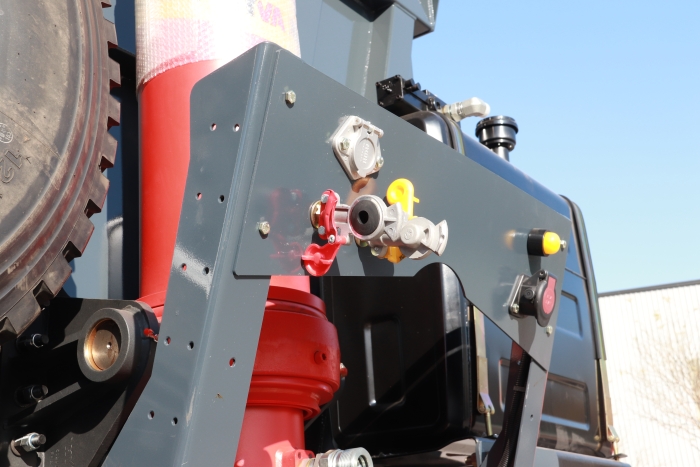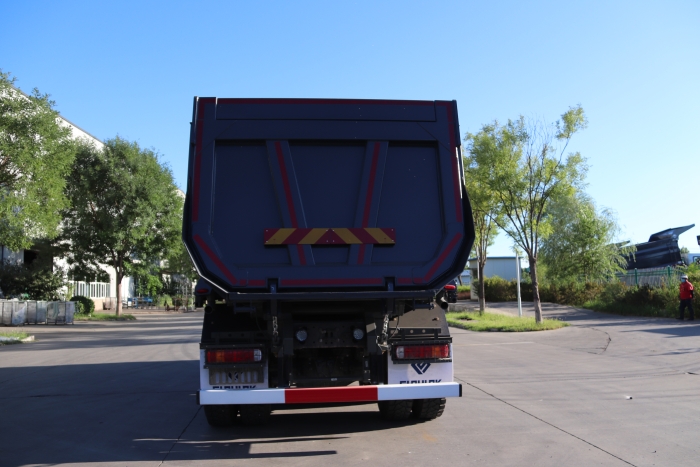- PRODUCTS
- SOLUTION
- SERVICE
- NEWS
- ABOUT US
Flat deck semi-trailers boost efficiency by up to 50%, offer unmatched cargo versatility, and reduce costs through simpler maintenance and fewer trips.

First and foremost, flat deck semi-trailers offer unprecedented loading efficiency, making them the standard choice for a wide range of cargoes. Unlike enclosed or specialty equipment trailers, a flat deck allows an unlimited access platform, eliminating the physical constraints that often become a challenge for the loading process. With the design, it is possible to use heavy equipment, such as forklifts, cranes, and other lifting mechanisms, for loading from any side effectively. For example, while an enclosed semi-trailer will require sequential loading from the back, a flat deck will allow the opening of loading operations on different sides at once. As a result, the reduction in loading time can reach up to 50% for cargo companies using flat decks for bulk transport, and the effect only tends to increase for larger qualities due to the loading time limitations. They are some of the significant reasons why flat decks are considered general purpose semi-trailers in cargo transportation.
Another noteworthy advantage of flat deck semi-trailers is the incredible range of cargoes that these can operate. Semi-tankers, fuel tankers, and reefers have limited applications, with the choices in cargo being heavily pre-determined and the design of the trailers being built around it. In contrast, flat deck trailers improve their utility with versatility. They can be used to transport oversized construction machinery, reinforced concrete, gravel, road-building materials, machinery, livestock, palletized goods, and a wealth of other products. For instance, while the actual shipping of equipment may require a series of trips if an equipment trailer is used, transports using a flat deck can carry all necessary equipment.
From an economic perspective, flat deck semi-trailers are advantageous due to their cost savings. Low maintenance needs in comparison to other trailers, which may have moving parts or temperature control systems, ensure that little money is necessary to keep them in working order. Moreover, their ability to be used for many different loads means that only a few need to be owned and operated, further reducing capital investment and costs of operation . The use of flat decks can be especially beneficial for companies that are transporting their goods over large distances such as grain producers in the Midwest taking their products to be shipped from the East Coast ports. The savings in fuel and cost of maintenance for the simple flat deck in comparison to a more complex and specialized trailer can be immense as well, amounting to thousands of dollars saved annually.
From a safety perspective, flat deck semi-trailers are especially efficient as well. The open design not only makes it easier to load the goods but also to inspect and secure them safely. As Johnsonnotes, the easily accessible tie-down points make the process much easier, while the fact that the cargo cannot be trapped anywhere in the structure of the trailer means it is also unlikely to shift during transportation . This reduces the risk of an accident occurring during travel . Johnsonalso suggests that according to a study done by the National Highway Traffic Safety Administration, flat decks experience fewer load-related accidents than enclosed trailers .

Finally, flat deck trailers are more environmentally friendly than the alternatives. Their lower number of trips needed to transport goods reduce the number of times the vehicle needs to be refueled, as well as the emissions it produces. For example, the flattest and longest trailers can be used to transport wind turbine blades with no specialized equipment, resulting in fewer trips required for completion of transportation .
Flat deck semi-trailers, for one, are notable for their ease of maneuverability, which makes them particularly advantageous for tight spaces, urban environments, and intricate loading or unloading procedures. Longer than the standard semi-trailer and lower to the ground, flat deck semi-trailers are designed to ensure better handling and flexibility. As a rule, bulkier and heavier trailers are more rigid in this aspect, which may pose a series of challenges. The agility of the flat deck semi-trailer is likely to be beneficial for a driver who needs to deliver the cargo to a location with limited access or faces challenging road conditions.
The flat deck trailer is relatively simple in design, which means that it is not as heavy. While a driver would experience difficulty when dragging a partially loaded bulkier semi-trailer through sharp turns, navigating a flat deck of the same length would be much easier. The relatively simple design of the trailer ensures that there are no walls or roof, which reduces weight and consequently lowers the center of gravity. In this way, a flat deck semi-trailer enjoys improved stability both defensively and offensively. The relatively lower trailer means that it is less likely to tip over or jackknife, unlike the high sides or roof of the enclosed trailer . A demonstration performed by the world’s leading transportation research institute also confirmed the stability of the flat deck semi-trailer, which was more resistant against wind and other encumbrances by as much as 20 percent . Added weight and reduced agility of the trailer mean that it can be loaded with a wider array of heavier goods, while the lower floor is kept relatively intact, which is particularly important when travelling through steep mountains.
One more aspect that needs to be mentioned is the visibility advantage of the flat deck semi-trailers. As professional drivers argue, it is easier to move an empty flat deck trailer, which allows the load and the surrounding areas to be seen unrestricted. Sometimes, load manipulations performed in densely populated, urban, and city areas require unordinary precision, which may only be achieved when a driver can see the ground or the placing point of the materials needed. In other words, higher visibility is one of the aspects that are frequently referred to reduce stress levels and increase the level of safety on board, allowing for more effective unloading and loading.
On the whole, the present paper has focused on the issue of the easy maneuver of the flat deck semi-trailers when the instances of moving them on many different types of towing vehicles are concerned, such as city streets, the weather, and others. However, the present paper has not looked at the extent to which the flat deck semi-trailers will be used depending on their maneuver, the weather, and the requirements of the vehicle used for transportation . At this point, it needs to be stressed that it is fundamental for logistical effectiveness to ensure that the load is not affected in any way and the largest number of flat deck semi-trailers should be used at the same time. As a result of the maximum versatility of the loads transported and the maximum number of such loads in every run, using a flat deck trailer yields substantial results.
Flat deck semi-trailers symbolize the apogee of cargo transportational flexibility. There are absolutely no physical barriers for the type of cargo a flat deck can carry or for the shape of such a cargo. For comparison, enclosed trailers are restricted when it comes to what they will be able to carry due to the trailers’ internal dimensions. Conversely, if a specific trailer is used for a certain type of cargo, it is wasted partially when zero of such cargo is being transported. An excellent example is the case of tankers. They are heavy and expensive, but they cannot be fully utilized with a different type of cargo. In contrast, a flat deck can transport any cargo, from construction materials to heavy machinery or wind turbine blades, which are extremely hard to fit within any space provided by an enclosure. For example, what is 100 feet long and should stay within a moving vehicle? Wind turbine blades, whose transportation would be impossible if it was enclosed, as too much space would be wasted.
Moreover, not only can a flat deck carry cargo, but it also makes this connection safe and easy. There are multiple tie-downs across the entirety of a flat deck platform. They are employed using various techniques to secure the cargo and guarantee that it reaches the destination safely. To retain the maximal amount of cargo, logistics professionals use overhang loading – placing some of the cargo beyond the main platform of a trailer, as well as many other creative strategies. These practices are permitted and regulated but are only viable with a flat deck trailer. There has been dozens of documented cases when a company was able to increase its transportation practices’ performance, which saved up to 30% of the costs in some extreme instances.
Besides, companies can transport a wide variety of goods that would be impossible for other semitrailers. Flatdeck semi-trailers require less space than other types of semitrailers while providing the driver with the ability to properly secure the cargo . Therefore, a company can use a smaller fleet of trailers, reducing the cost of their maintenance and operation. On the other hand, flatdeck semi-trailers are also perfectly adapted to rapid response to market demands, providing a company with a competitive advantage in the context of the acute competition of the contemporary logistics and transportation industry.
Maximizing load versatility and capacity is possible. However, the process requires planning and knowledge of load securing techniques and strategies on the part of professional drivers and logistics planners. Both professional drivers and logistics planners should have an extensive knowledge of load securing regulations, weight distribution, and the capacity of their trailers . The possessors of this knowledge can secure each load to maximize its versatility and capacity while complying with all regulations to ensure its and the vehicle’s and other drivers’ safety protection.